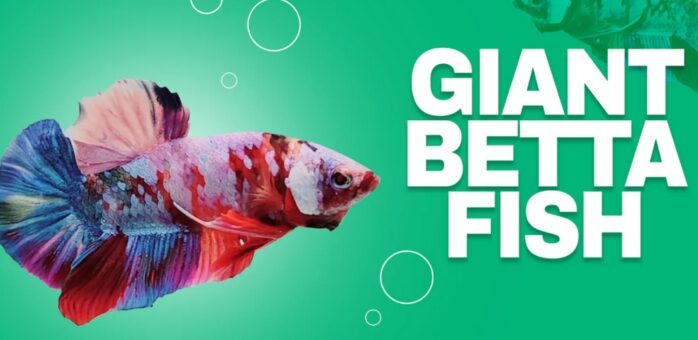
Betta fish, known for their vibrant colors and flowing fins, have captivated fish enthusiasts for decades. While the typical Betta is small and elegant, there is a unique and captivating variant known as the giant betta fish. In this comprehensive guide, we will explore the fascinating world of Giant Betta fish, covering their appearance, and size, and providing a detailed care guide to ensure their well-being in your aquarium.
Overview of Giant Betta Fish
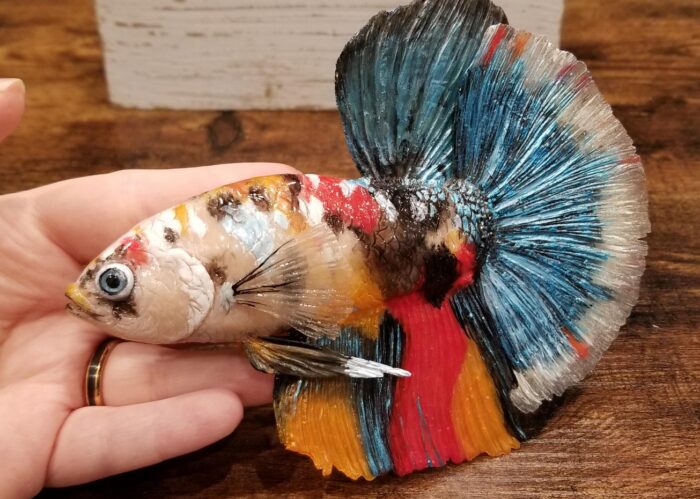
Appearance
Distinctive Features:
Giant Betta fish share some common features with their smaller counterparts, such as the long fins and vibrant colors. However, they are notably larger, making them stand out in any aquarium. The enlarged size enhances their overall majestic appearance.
Color Variations:
Like regular Bettas, Giants come in a variety of colors and patterns. From iridescent blues and reds to striking metallic hues, the Giant Betta’s coloration can be truly mesmerizing. Understanding the color variations is crucial for enthusiasts looking to choose the perfect Giant Betta for their aquarium.
Size
Comparative Size:
One of the most distinguishing factors of Giant Bettas is their size. While a typical Betta might measure around 2 to 3 inches, Giants can grow up to 3.5 to 4 inches or even larger. This notable size difference requires specific considerations in terms of tank size and other care aspects.
Growth Rate:
Understanding the growth rate of Giant Betta fish is essential for planning their habitat and anticipating their needs as they develop. Factors such as genetics, diet, and environmental conditions play a crucial role in determining how quickly a Giant Betta will reach its full size.
Setting Up the Ideal Habitat
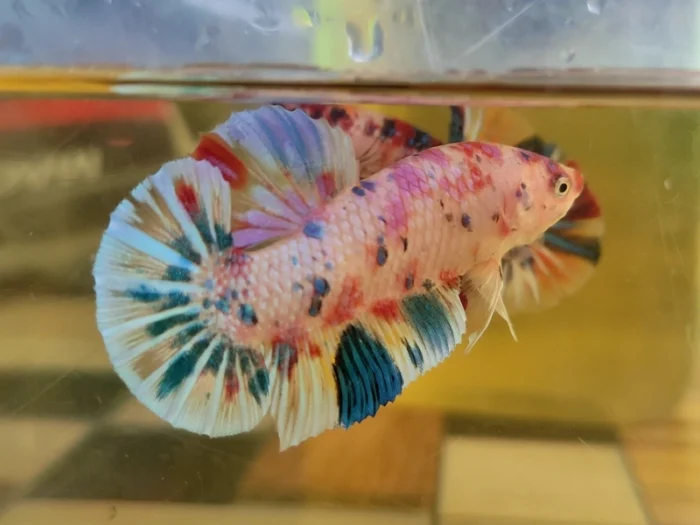
Tank Size:
Given their larger size, Giant Betta fish require more spacious tanks than their smaller counterparts. A tank with a minimum capacity of 10 gallons is recommended to provide ample swimming space and to accommodate their increased size comfortably.
Filtration:
Proper filtration is crucial to maintain water quality, especially in larger tanks. Giant Bettas are sensitive to changes in water parameters, and a reliable filtration system helps to keep the water clean and oxygenated. Choosing the right filter and regularly performing water tests are essential aspects of their care.
Heating:
Giant Betta fish, like their smaller counterparts, are tropical fish that thrive in warm water. Maintaining a consistent temperature between 78 to 80 degrees Fahrenheit (25 to 27 degrees Celsius) is vital for their overall health and well-being. Investing in a reliable aquarium heater with adjustable settings is recommended.
Decor and Substrate:
Creating an environment that mimics their natural habitat is crucial for the well-being of Giant Betta fish. Provide plenty of hiding spots, plants, and other decorations to create a stimulating and enriching environment. Additionally, choose a substrate that is suitable for their preferences and promotes a healthy aquarium ecosystem.
Nutrition and Feeding
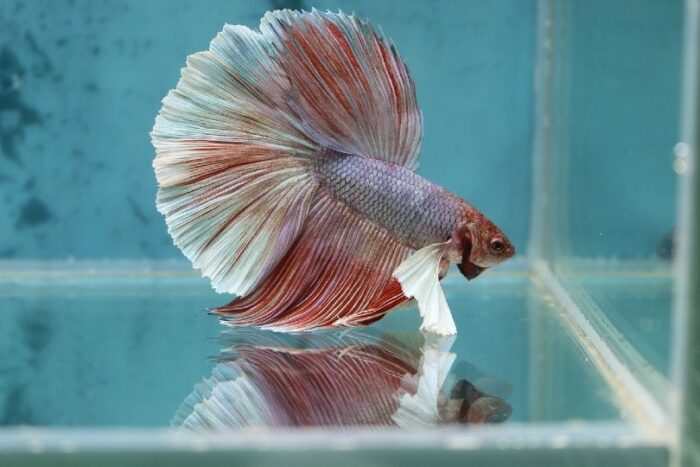
Dietary Requirements:
Giant Betta fish, like all Bettas, are carnivorous. Their diet should consist of high-quality betta pellets, and frozen or live foods such as brine shrimp, bloodworms, and daphnia. Providing a varied and balanced diet is essential to ensure they receive all the necessary nutrients for optimal growth and vibrant coloration.
Feeding Schedule:
Establishing a regular feeding schedule is crucial for maintaining their health. Overfeeding can lead to obesity and other health issues, while underfeeding can result in nutritional deficiencies. Feed them small portions multiple times a day, ensuring they consume their food within a few minutes to prevent overfeeding.
Health and Disease Prevention
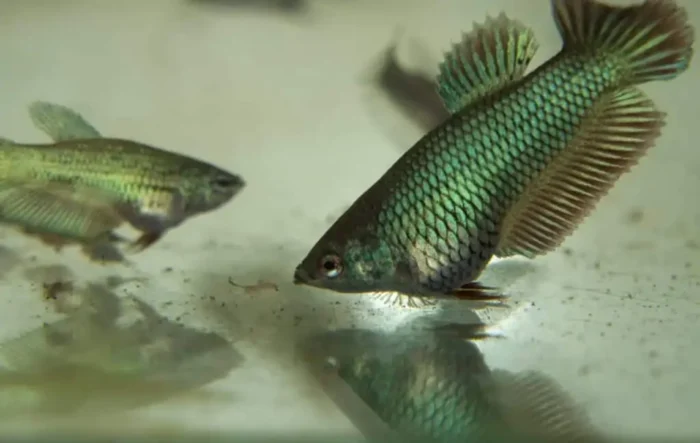
Water Quality:
Regular water changes and monitoring water parameters are critical for preventing diseases and ensuring the well-being of Giant Betta fish. Keep ammonia, nitrite, and nitrate levels in check, and ensure that the pH level is within the appropriate range for Betta fish.
Common Diseases:
Giant Betta fish, like all Betta varieties, are susceptible to certain diseases. Being aware of common illnesses such as fin rot, ich, and velvet is crucial for early detection and treatment. Quarantining new fish before introducing them to the main tank can help prevent the spread of diseases.
Stress Management:
Giant Bettas, while stunning, can be sensitive to stress. Provide them with a low-stress environment by avoiding sudden changes in water conditions, minimizing disturbances, and ensuring compatibility with tankmates. Adequate hiding spaces and a well-planted aquarium can also help reduce stress.
Breeding Giant Betta Fish
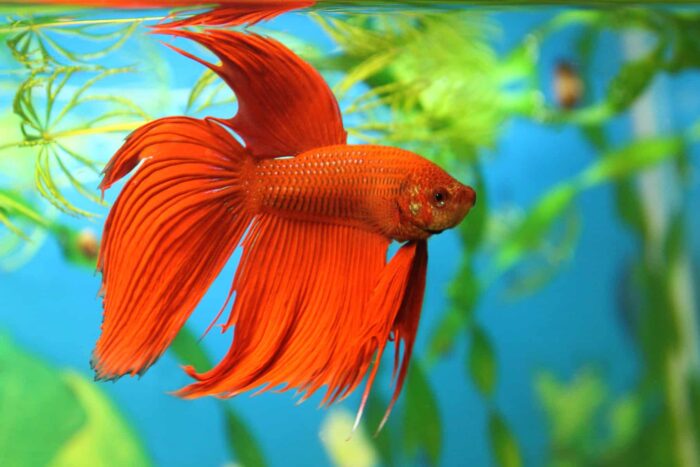
Selective Breeding:
Breeding Giant Betta fish involves careful selection of breeding pairs based on their size, color, and finnage. Enthusiasts often engage in selective breeding to enhance specific traits and produce visually striking offspring.
Breeding Tank Setup:
Creating a suitable breeding environment is crucial for successful reproduction. Set up a separate breeding tank with appropriate nesting sites, floating plants, and hiding spots. Monitor water parameters closely during the breeding process to ensure optimal conditions for both the parents and the fry.
Fry Care:
Once the fry hatch, providing them with proper nutrition and a safe environment is essential. Start them on a diet of infusoria or powdered fried food, gradually transitioning to finely crushed pellets. Regular water changes and careful monitoring of water quality contribute to the healthy development of the fry.
Conclusion
The world of Giant Betta fish is as captivating as it is unique. Their larger size, vibrant colors, and majestic fins make them a prized addition to any aquarium. By understanding their distinctive characteristics and following a comprehensive care guide, enthusiasts can ensure the well-being and longevity of these remarkable fish. From setting up the ideal habitat to managing their health, this guide serves as a valuable resource for those seeking to provide the best care for their Giant Betta companions.






